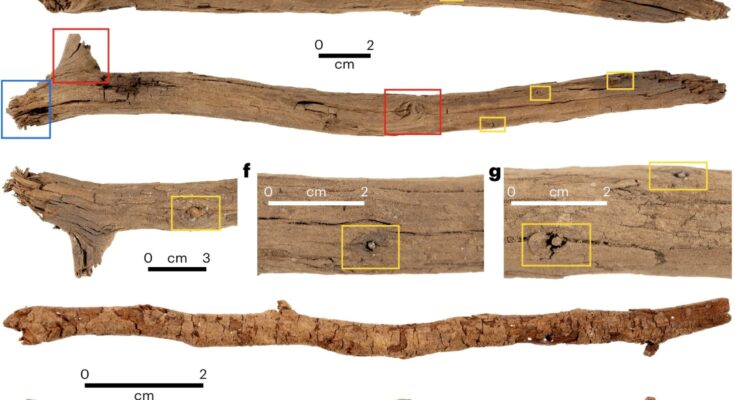Researchers and members of the Aboriginal community have discovered evidence of an ancient ritual in Australia. This ritual has been practiced continuously for about 500 generations.
It dates back to the end of the last Ice Age, and it continued until the 19th century. This significant find was made in Cloggs Cave in southeastern Australia. It suggests that this ritual might be the oldest known cultural practice that is still in existence, as reported by Archaeology Mag.
From 2019 to 2020, a team of archaeologists from Monash University collaborated with members of the GunaiKurnai Land and Waters Aboriginal Corporation (GLaWAC) to excavate Cloggs Cave near the Snowy River in Victoria.
This site, previously partially excavated in the 1970s, unveiled a rich and detailed record of Aboriginal culture spanning 25,000 years.
Two small fireplaces discovered at Cloggs Cave
Researchers recently discovered two small fireplaces at Cloggs Cave. Each contained a stick made from Casuarina tree wood. Radiocarbon dating showed these artifacts were about 11,000 and 12,000 years old. This makes them the oldest wooden artifacts ever found in Australia.
Evidence for what may be the oldest known culturally transmitted ritual, preserved in fireplaces in southeastern Australia from around 10,000-12,000 years, is presented in a paper published in @NatureHumBehav. pic.twitter.com/7Jdy7leHDu
— Nature Portfolio (@NaturePortfolio) July 2, 2024
The discovery became even more significant when researchers connected it to 19th-century writings by Alfred Howitt, an early anthropologist. Howitt described the customs of tribes in southeastern Australia, including the GunaiKurnai people.
He wrote about a ritual called “mulla-mullung,” performed by GunaiKurnai medicine men and women. This ritual involved smearing sticks with fat, placing them in a fire, and chanting a person’s name until the stick fell, which was believed to cast a spell.
The archaeological findings at Cloggs Cave closely mirrored Howitt’s descriptions.
Aboriginal ritual shows continuity for 12,000 years
Bruno David, lead author of the study and an archaeologist at Monash University, explained that this ritual represents 12,000 years of continuity, with knowledge being passed down from one generation to the next, maintaining a cultural practice almost intact over 500 generations.
This study was possible due to the collaboration between archaeologists and the GunaiKurnai community. Russell Mullett, a GunaiKurnai elder and co-author of the study, emphasized the significance of this opportunity to investigate the heritage of their ancestors. He views the study as a way to reclaim cultural knowledge lost during the colonial era.
The particular study shows how important it is to use both Aboriginal knowledge and scientific methods together. Russell Mullett was amazed that these ancient artifacts survived and told a story.
He said they remind us that Aboriginal culture is still alive and linked to its ancient past. Mullett explained that only by combining Western scientific techniques with traditional knowledge can we fully understand the whole story.



